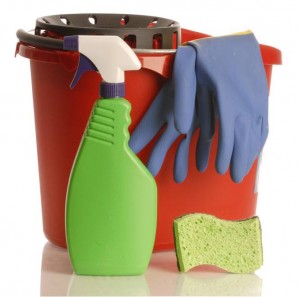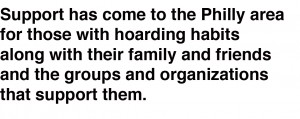No Matter How Much
We Wish For More!
Managing our time and never having enough of it seems to be a common theme these days. I hear the same complaint from students, single people, married people, parents of young children, baby boomers, working people, and even retirees — believe it or not. No matter what your age or what stage of life you are in, time management skills will make your life easier to handle.
We all have demands put upon us by others (e.g., boss, children, spouse, friend, other family members). However, we are in control of what we decide to do and what we decide not to do. If it’s between going to the doctor because you are sick or driving 5 miles out of your way to save $.50 on a gallon of milk, you may want to forgo the latter just to give yourself more time to do the things that are absolutely necessary. Then, you’ll be able to give yourself time to relax, take a deep breath, and re-energize.
If you always have too many activities to handle in a day, think about what you have to get done, what you want to get done, what you don’t want to do, and what you don’t have to do. Make columns on a piece of paper with these headings and write them down rather than keeping them in your head. This will help you to visualize what is going on in your life and may even spur you on to not do those things you don’t want to or think you have to do.
And, by the way, don’t forget to fit sleep into those 24 hours. What are you going to do to manage your time better so you finally are able to do those things you love? My goal is to see you go from Bedlam to Brilliance!
 When trying to save time and money at the grocery store, the first step is to start with your menu plan. Plan your meals by making a weekly menu. Of course you can also do bi-monthly or monthly if you feel so inspired, but if this is a new process start with a week until you get comfortable with this idea.
When trying to save time and money at the grocery store, the first step is to start with your menu plan. Plan your meals by making a weekly menu. Of course you can also do bi-monthly or monthly if you feel so inspired, but if this is a new process start with a week until you get comfortable with this idea.
For each day of the week, plan what your meals will be including breakfast, lunch, snacks, and beverages. Now check to see if you have written any specialty recipes down that may require additional ingredients such as spices, etc. Start making your grocery list based upon your menu.
Check your pantry and make sure you have all of the ingredients or food items you need to accomplish your meal plan for the week. If you do not, write them down on your grocery list. This way of planning will keep you organized so preparing and cooking your meals will go off without a hitch. Being organized will help to prevent the need to run back to the store for forgotten items or ingredients.
Keep a running grocery list during the week for any supplies that run out or are getting low. Add these items to your grocery list. This is an especially helpful household task for when you have multiple family members. If you used the last of something, put it on the list, do not let the next person needing that item be the one to find out it’s not there when they need it. A detailed grocery list helps you from forgetting items that you may need.
Do you use coupons? If not skip this paragraph. If so, keep your coupons in a file or a convenient place such as your pocketbook. Organize the coupons in the same manner you organized your list; by the order of where those items will be found in the aisles. Check that you are purchasing the exact brand, item, size requirement, etc. from that coupon as you are selecting that item. This will save you time and embarrassment at the checkout counter from choosing an incorrect item. Also check for expiration dates on your coupons.
Now if you want to save time at the grocery store take this list one step further and organize the list based upon the grocery store aisles where you do your shopping. This way you are able to cross items off the list as you go up and down the aisles. This will help you from going back and forth through the aisles if you skip something. It also helps from forgetting items.
To recap:
Planning your menu and grocery list in an organized manner will not only help you become an organized shopper, it will save you time and money as well. Happy Shopping!
“Help! I can’t stand it anymore! My office is a disaster. Papers are piled everywhere. I don’t know where things are. I don’t know what supplies I have until I run out. My bulletin boards have announcements for events that happened two years ago attached to them. I’m behind on my work, and I hate being in my office. My life is a mess!”
“Was this a phone call I received from a potential client?” you may ask. No. This is what I said two weeks ago when I felt like I was drowning in paperwork, and my life was a mess. “But wait,” you exclaim. “You’re a Professional Organizer. You know how to organize stuff. Why can’t you just organize your office?” The answer is that even we, who are experienced and proficient organizing other people’s things, sometimes cannot do it for ourselves.
Every morning I would walk into my office with incredible determination. “This will be the day that I finally and completely organize my office and my life!” But when I walked into my office, something happened. I looked at the piles of paper and the disorganization, and I became paralyzed with dread.
It doesn’t matter whether the area that is disorganized is an office, a kitchen, a bedroom or a play room. Sometimes it just feels as though as much as you really, really want to get organized, you’re just having a hard time doing it. So I asked myself what I would tell a prospective client if they called me with a similar situation.

But what do you do if you can’t get yourself to commit to tackling that cluttered area for even five minutes? Take a tip from a professional who has been-there-done-that. Either call a friend who is nonjudgmental and willing to help or call a professional; which is what I did. I figured that if I call a doctor when I’m sick and go to the dentist when I have a toothache, I should call a professional organizer when it feels like my (insert name of area here) needs organizing. What about you? Take just 5 minutes and call for help. Now? Yes! If not now, when?
 Every email that comes in is an opportunity. Every Facebook article is a worthwhile read. Every free 60 page ebook is a life saver. But come on now, if you read everything you could read you would NEVER BE DONE and on top of that YOU WOULD NEVER GET TO WHAT IS MOST IMPORTANT.
Every email that comes in is an opportunity. Every Facebook article is a worthwhile read. Every free 60 page ebook is a life saver. But come on now, if you read everything you could read you would NEVER BE DONE and on top of that YOU WOULD NEVER GET TO WHAT IS MOST IMPORTANT.
I’ve been a long-time advocate for short and sweet, so I always try to keep everything I share manageable and digestible in 5 minutes or less. That’s what I can do for you.
What can you do for yourself?
If you choose to spend your time on things that just pop up and come your way you will NEVER get to the work you want to do. To be a high performer be clear on what is important and spend your time on what matters. All the rest? JUST SAY NO – LET THEM GO.
 I don’t know about you, but spring is my favorite time of year, and the last thing I want to do is spend my weekend or multiple weekends focusing on cleaning and organizing my entire home. Instead of pulling out that long list of spring cleaning duties, consider breaking up the list into bite size pieces to be completed throughout the year.
I don’t know about you, but spring is my favorite time of year, and the last thing I want to do is spend my weekend or multiple weekends focusing on cleaning and organizing my entire home. Instead of pulling out that long list of spring cleaning duties, consider breaking up the list into bite size pieces to be completed throughout the year.
Maintenance is a much easier solution and a tremendous time saver.
Pick Your Battles
Look at your list and determine the cleaning and organizing tasks that make the most sense for this time of year. For example, closets are a great place to start because this is the time of year we change from winter to spring/summer attire. Garages are another good area of focus. Now is the time to put away the snow blower and pull out the lawn mower. And, let’s be honest, things tend to get piled and tossed into the garage all winter, so it’s time for a garage clean-out. Your garden shed is another great fit for seasonal organizing. Inspect and sharpen your garden tools, take stock of your supplies, clean your clay pots and determine your tool storage area based on how often you use the tools. Also, with the onset of warmer weather comes the need to change to lighter blankets and comforters, and once the bed is stripped you can vacuum and turn the mattress to complete the process.
Maintenance is Key
Now that you have decided which areas make sense to organize during the spring season; let’s break the rest of that cleaning and organizing list into manageable tasks to be completed throughout the year. Baseboards, doors, and cobwebs can be dusted and cleaned during the winter when you’re stuck inside during a snowstorm. Lampshades and ceiling fans can be dusted at regular intervals when you dust the rest of your home. Draperies, blinds and carpets can be cleaned in the fall or the end of the summer. Many people have self cleaning ovens that can be cleaned any time of the year, and grease traps and stove filters are easy to replace or clean on an as needed basis.
Consistency is the Name of the Game
Having a consistent, year round routine will help you avoid investing large chunks of time in the spring. Instead, get out and smell the forsythia, spend time with family and friends, or do whatever makes you happier at this wonderful time of year. Organizing and cleaning are necessary for a functional life, so finding ways to spread it out and make it easier in the long run will save you endless hours each season.

Along with four other Professional Organizers, I had the opportunity to attend a meeting of the Philadelphia Hoarding Task Force and was excited to find out that we are NOT ALONE!
The result of hoarding behaviors touches countless lives. The most obvious is the lives of those with hoarding habits, those who live with them, their children, family members, and close friends. Maybe, less obvious, is the effect of this life style on their surrounding communities. Often times there have been multiple attempts to deal with and support those with hoarding habits resulting in little change and outcomes that don’t last long. Interventions usually focus on having the person divest themselves of things that clutter their living spaces. Frustration, hard feelings are the typical results as little seems to penetrate the multifaceted web of commingled issues, emotions and unrelenting habits that have, more likely than not, spanned the individual’s life time.
This particular and persistent practice of collecting is the manifestation of a complex network of interpretations for the person who engages in hoarding behaviors. For many who are observing these hoarding tendencies, it is virtually impossible to understand, decipher, and make sense of the complexities involved in the condition. Working side by side with clients who engage in hoarding behaviors, I have heard very elaborate and creative explanations for their holding on to what looks like, to anyone else, seemingly useless items. Their ‘need’ to save things is logical in their view, however, the result of their logic is counterproductive to their desire to alleviate their situation that impacts themselves, their loved ones, and in some cases, their community.
Because the result of hoarding behaviors looks like disorganization and clutter, at first glance, it would seem like working with hoarding situations is perfectly suited for the organizing profession. Initially, that was the thinking of the pioneers of our profession until they began to notice that successful organizing methodologies, principles, and products did not seem to work with certain clients. During those early years, organizers tried to impact situations where shower rods became alternate hanging spaces for clothes, dining room tables became storage for piles of papers often flowing over to the accompanying chairs, and beds housed everything else leaving little to no room for the owner. The result, a sub group of NAPO was birthed. Back then it was called NSGCD (The National Study Group on Chronic Disorganization). Today, it is its own independent organization called The Institute for Challenging Disorganization (www.ChallengingDisorganization.org). Their mission is to provide education, research, and strategies to benefit people challenged by chronic disorganization.
Working with these situations for the past 11 years as well as being a member of NAPO and ICD, I have learned that simply talking about the ‘stuff’ with clients is limiting and often times futile. Getting to the reasons and explanations for their need to hold on to items helps to unlock the interpretation that justifies their hoarding behaviors and often times can loosen the grip of their ‘need’ to hold on to things. However, delving into the root cause of these tendencies is outside an organizer’s skill set and training. Teaming up with other professionals such as social workers and therapists, offers more hope for longer-lasting results.
Finding these opportunities to team up with other professionals working with people challenged with chronic disorganization has not been easy until recently when the Greater Philadelphia Chapter of NAPO (NAPO-GPC) was contacted and invited to participate on the Philadelphia Hoarding Task Force. An impressive list of local organizers accepted the invitation, and it was love at first meeting! Finally, we are NOT ALONE in our work with these clients!
Still in its infancy, the mission of the Philadelphia Hoarding Task Force, co-chaired by David Wengert from the Community Legal Services and Katherine Martin, Deputy Policy Director from the Mayor’s office, is to “ensure positive outcomes for those individuals who are impacted by hoarding.” Although the Task Force does not provide direct services, its role is to ensure access to resources, training for provider organizations, and education about hoarding in Greater Philadelphia”. The meeting that I attended with four of my collogues was comprised of representatives from the Philadelphia Police and Fire Department, Licenses & Inspections, Philadelphia Corporation for Aging, and Clutterers Anonymous, to name a few. Each of the representatives brought their unique perspective to the meeting. The shared conclusions was that the work of the Task Force should focus on the individual, not the problem, i.e. the ‘stuff’ and that this perspective should permeate all efforts made by the Task Force, especially in the educational trainings it provides.
A shared understanding of the complexity that leads to hoarding behaviors among the organizations that confront these circumstances, along with sharing resources, expertise, accountabilities, and services, was music to all of our ears!
Finally, we as organizers, can say, we are NOT ALONE in our work with clients who are struggling with habits of hoarding! Collaborating with other professionals helps us offer those challenged by hoarding habits a more holistic service approach, and a hopeful future.
Suggested Resources: